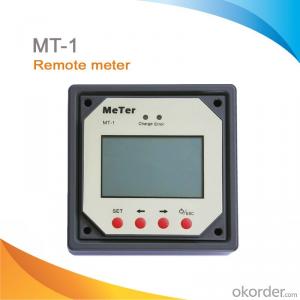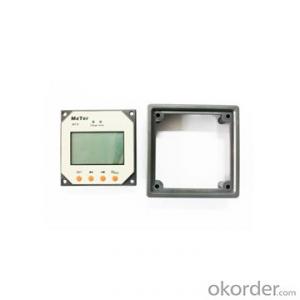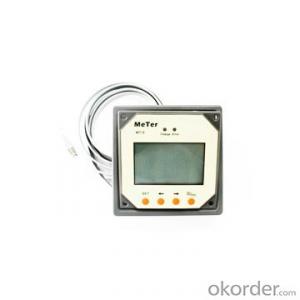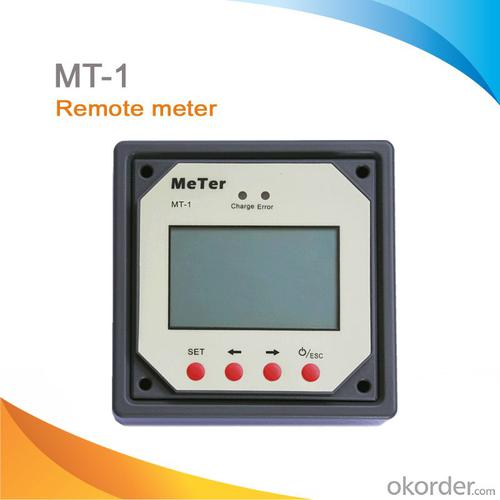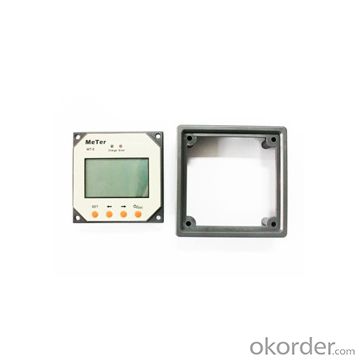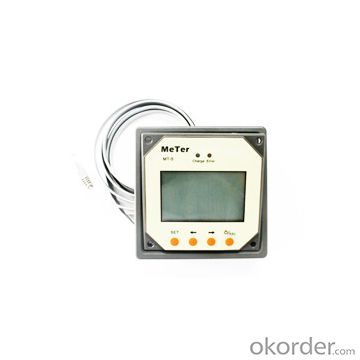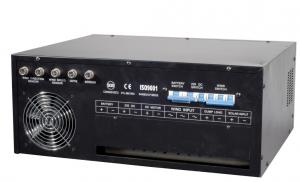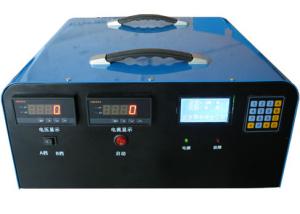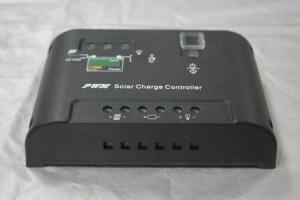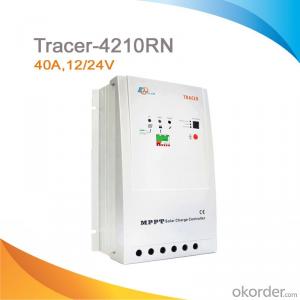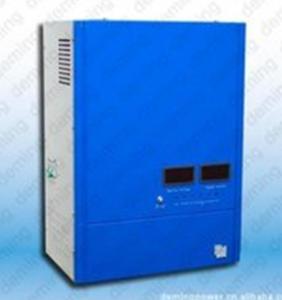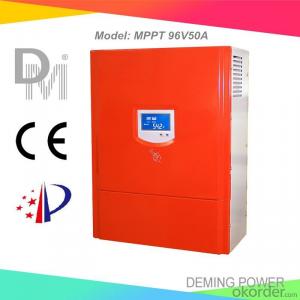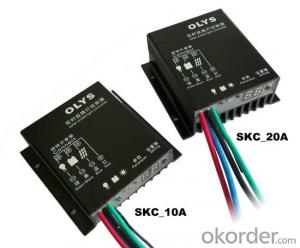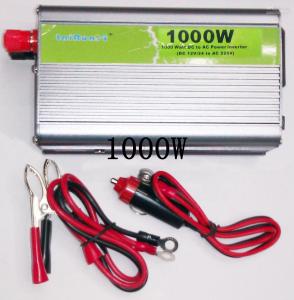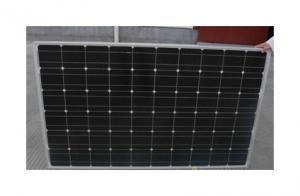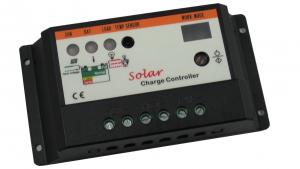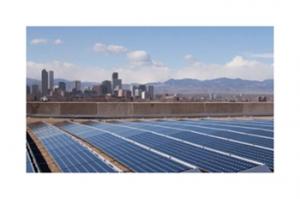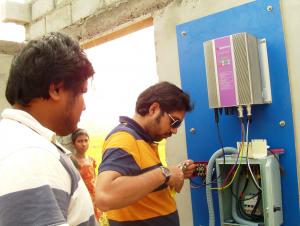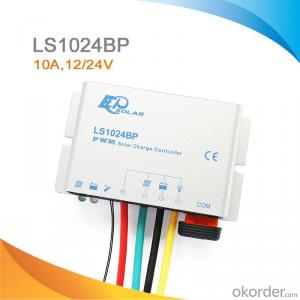Best Solar Panel Controllers for Epipdb-com Series Remote Display and MT-1 Remote Meter
- Loading Port:
- Tianjin
- Payment Terms:
- TT or LC
- Min Order Qty:
- 60 pc
- Supply Capability:
- 10000 pc/month
OKorder Service Pledge
OKorder Financial Service
You Might Also Like
MT-1 is an optional accessory for EPIPDB-COM series solar charge controller. The LCD displays the system status and parameters clearly.
Features:
·Display the system status and parameters with digital and graphic icon.
·Battery type selectable
·Battery Ah setting function
·Temperature compensation coefficient adjustable
·Four keys to solve the setting easily
·Control the load by manual
Specification:
Rated voltage | 12V, min voltage (suggest): 8.0V |
Strong backlight on | <23mA |
Low backlight on | <20mA |
Backlight and LED indicator off | <17mA |
Operation temperature | -40℃ ~ +60℃ |
LCD operation temperature | -10℃ ~ +40℃ |
Humidity | 0-100% |
Communication cable | RJ45(8PIN), 10 meter |
Battery voltage parameters (temperature at 25°C) | |||
Battery charging setting | Sealed | Flooded | Gel |
Equalize charging voltage | 14.4 V;x2/24V | 14.6V;x2/24V | 14.8V;x2/24V |
Boost charging voltage | 14.2V;x2/24V | 14.4V;x2/24V | 14.6V;x2/24V |
Float charging voltage | 13.7V;x2/24V | 13.7V;x2/24V | 13.7V;x2/24V |
Max. solar voltage | 30V(12V system),55V(24V system) | ||
Battery voltage range | 8-15V(12V system),8-30V(24V system) | ||
Self-consumption | 4mA at night, 10mA at charging | ||
Meterbus connection | 8-pin RJ-45 | ||
Temp. compensation | -5mv/℃/2V | ||
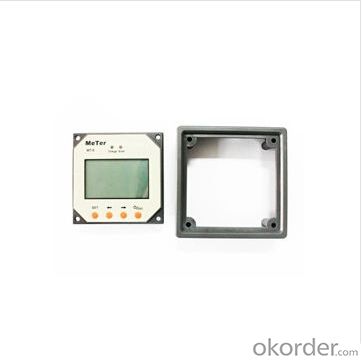
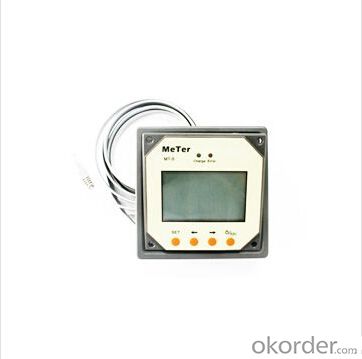
FAQ:
Q1. What is the voltage?
A1. Our 45/60A solar charge controller is 12/24/36/48V auto work.
Q2. What is the difference between MPPT&PWM?
A2. MPPT has higher efficiency, it can track the max power point and won't waste energy.
Q3. What is the efficiency of the MPPT controller?
A3. MPPT>99%, peak conversion efficiency>98%.
Q4. What is the waranty of product?
A4. 12 months.
Q5. What protection does your MPPT controller have?
A5. PV array short circuit, PV reverse polarity, Battery reverse polarity, Over charging, Output short circuit.
- Q: Can a solar controller be used with a solar microinverter system?
- No, a solar controller cannot be used with a solar microinverter system. Solar microinverters are designed to convert the DC power generated by individual solar panels into AC power directly at the panel level, whereas a solar controller is used to regulate and control the charging of batteries in a solar system. These two components serve different purposes and are not compatible with each other.
- Q: Can a solar controller be used with solar panels that have different wattages?
- Yes, a solar controller can be used with solar panels that have different wattages. The solar controller's main function is to regulate the charging of batteries or the flow of power to the load. It is designed to handle varying wattages and can efficiently manage the charging process regardless of the panel wattage differences.
- Q: Can a solar controller be used with a solar-powered bus stop?
- Yes, a solar controller can be used with a solar-powered bus stop. A solar controller is responsible for regulating the power flow from solar panels to the connected devices or batteries. In the case of a solar-powered bus stop, a solar controller can efficiently manage the power generated by the solar panels, ensuring that the batteries are charged optimally and the bus stop's lighting, display boards, or any other devices are powered appropriately. This helps in maximizing the efficiency and reliability of the solar-powered bus stop system.
- Q: Can a solar controller be used in a solar-powered agricultural system?
- Yes, a solar controller can be used in a solar-powered agricultural system. A solar controller is designed to regulate the charging and discharging of batteries in a solar power system, ensuring optimal performance and prolonging battery life. In a solar-powered agricultural system, the solar controller can be used to manage the power generated by the solar panels and distribute it efficiently to various components such as irrigation systems, pumps, and lighting, thus enabling sustainable and efficient operation of the agricultural system.
- Q: How does a solar controller handle battery short circuit protection?
- A solar controller handles battery short circuit protection by constantly monitoring the current flow between the battery and the solar panels. If a short circuit occurs, the controller immediately detects the sudden increase in current and activates a protection mechanism. This can involve cutting off the current flow from the panels to the battery, preventing any damage or overheating that could occur.
- Q: Can a solar controller be used with a solar-powered residential community?
- Yes, a solar controller can be used with a solar-powered residential community. A solar controller is an essential component of a solar power system and is used to regulate the flow of electricity from the solar panels to the batteries or the grid. It helps in optimizing the charging and discharging of the batteries, ensuring efficient energy management. In a solar-powered residential community, multiple solar panels are typically connected to a centralized system, and a solar controller is used to manage and distribute the solar energy generated among the households.
- Q: Can a solar controller be used with solar-powered telecommunications systems?
- Yes, a solar controller can be used with solar-powered telecommunications systems. A solar controller is responsible for regulating the charge from solar panels to batteries, ensuring optimal performance and preventing overcharging or damage. In solar-powered telecommunications systems, a solar controller helps manage the energy flow and ensures the batteries are charged efficiently, enhancing the reliability and longevity of the system.
- Q: What is the maximum current a solar controller can handle?
- The maximum current a solar controller can handle depends on its specifications and design. It can range from a few amps to several hundred amps, depending on the model and purpose of the solar controller.
- Q: What is the float charging mode of a solar controller?
- The float charging mode of a solar controller is a maintenance mode where the controller maintains the battery at its full charge level by supplying a small amount of current to compensate for self-discharge. This mode prevents overcharging and extends the battery's lifespan.
- Q: How does a solar controller handle the synchronization of loads?
- A solar controller handles the synchronization of loads by regulating the flow of electricity from the solar panels to the connected loads. It ensures that the power generated by the solar panels is distributed efficiently and evenly among the loads, preventing overloading or underutilization. The controller continuously monitors the voltage and current of the solar panels and adjusts the output accordingly to match the requirements of the loads. This synchronization process helps optimize the performance of the solar system and ensures the smooth operation of the connected devices.
Send your message to us
Best Solar Panel Controllers for Epipdb-com Series Remote Display and MT-1 Remote Meter
- Loading Port:
- Tianjin
- Payment Terms:
- TT or LC
- Min Order Qty:
- 60 pc
- Supply Capability:
- 10000 pc/month
OKorder Service Pledge
OKorder Financial Service
Similar products
Hot products
Hot Searches
Related keywords
